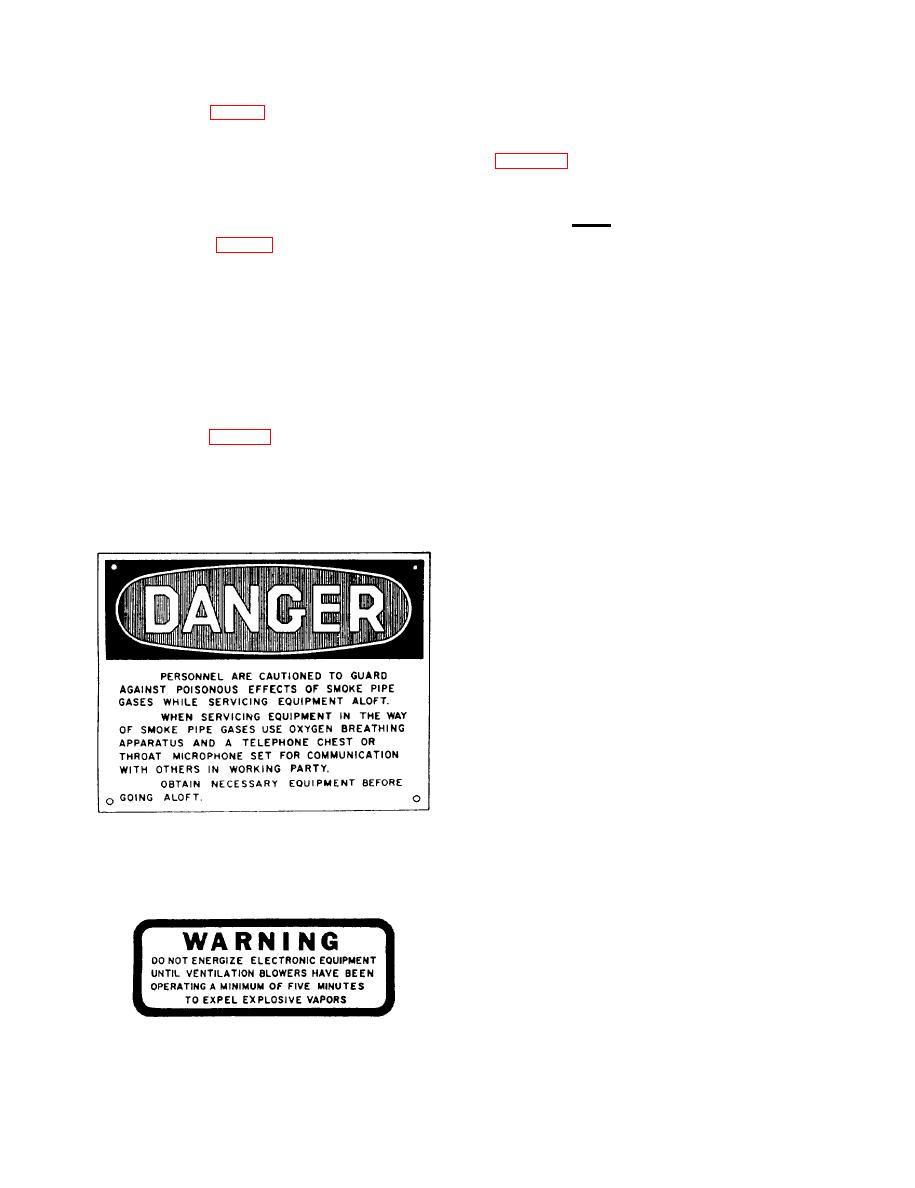 |
|||
|
Page Title:
Figure 1-2.-Smoke pipe gases warning sign. |
|
||
| ||||||||||
|
|
 Posters put up and left in one area for months become
used. Appropriate guards should also be installed at
these locations.
part of the bulkhead and are ignored, written on, or
covered with notices, schedules, or watch bills. The
Warning signs (fig. 1-2) are to be displayed at the
messages of these and other well-designed safety
bottom and top of all access ladders leading aloft to
posters are clear and to the point. The left-hand poster
alert personnel working aloft of the presence of smoke
of figure 1-6, for example, reminds personnel to think
pipe (stack) gases.
"safety"; the right-hand poster, to act promptly or
suffer the consequences. Remember that the messages
WARNING PLATES
are aimed at YOU. It is your responsibility to "read
and heed," and to remember your ABCs: --
Always Be
Warning plates (fig. 1-3) for electronic equipment
--
Careful.
are installed in small craft to warn against the
--
energizing of electronic equipment until ventilation
TAGS AND LABELS
blowers have been operating a minimum of 5 minutes
to expel explosive vapors. This warning plate should
Tags and labels are used in the Navy to identify a
also be displayed in all spaces where there is a
defective piece of equipment or instrument. Tags and
possibility of the accumulation of explosive vapors.
labels are also used to ensure the safety of personnel
and to prevent improper operation of equipment. They
SAFETY POSTERS
will be posted according to authorized procedures and
must not be removed or violated without proper
Safety posters (figs. 1-4, 1-5, and 1-6) are helpful
authorization and adequate knowledge of the
both as safety reminders and in promoting safety.
consequences.
Safety posters should be changed or rotated regularly
to different working areas to draw attention to them.
The use of tags and labels is not a substitute for
other safety measures, such as locking valves or
removing fuses from a fuse panel. Also, tags or labels
associated with tag-out procedures must never be used
for anything other than their intended purpose.
Remember, once a tag or label is used, it should
only be removed by signed authorization of the
authorizing officer. You should always follow your
command's procedures for logging and recording
tag-out actions.
MARKINGS
Markings consisting of paint or tape are used to
designate safe traffic lanes, operator caution areas,
operator working areas, and observer safe areas.
Safe traffic lanes are designated in workshops.
These lanes start and stop at all exits and entrances for
workshops and are marked by continuous white lines,
3 inches wide, painted on the deck.
Operator caution areas, operator working areas,
and observer safe areas are designated for each
equipment working area deemed hazardous. Operator
caution areas are marked by a continuous yellow line,
3 inches wide outlining the caution area. Operator
work areas are marked by painting the deck yellow in
areas where it is safe for an operator of machinery or
equipment. The outer perimeter of this area is
in small crafts.
designated by alternate black and yellow lines or
|
|
Privacy Statement - Press Release - Copyright Information. - Contact Us |